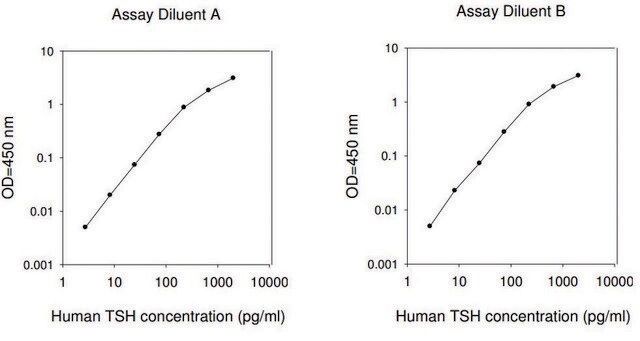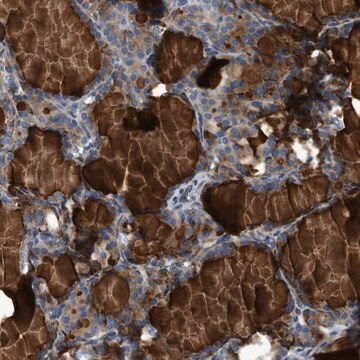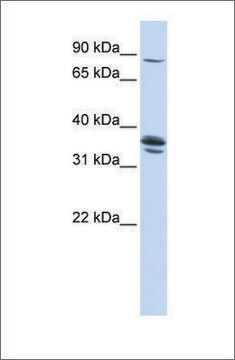GLP1A-35HK
Glucagon Like Peptide-1 (Active) RIA
About This Item
Produits recommandés
Qualité
for protein analysis
Niveau de qualité
Description
ED<sub>80</sub> = 28 ± 7 pM ED<sub>50</sub> = 82 ± 10 pM ED <sub>20</sub> = 241 ± 24 pM
analytes available: Glucagon Like Peptide-1
10-500 pg/mL (standard curve range)
Caractéristiques
accuracy 101% serum sample concentration 1:500 dilution–100 ng/mL standard
accuracy 40.7 ± 2.9%
Espèces réactives
rat, human, mouse
Technique(s)
radioimmunoassay: suitable
Numéro d'accès UniProt
Méthode de détection
radioactive
Description générale
SIZE: 180 amino acids; 20909 Da
SUBCELLULAR LOCATION: Secreted.
TISSUE SPECIFICITY: Glucagon is secreted in the A cells of the islets of Langerhans. GLP-1, GLP-2, oxyntomodulin and glicentin are secreted from enteroendocrine cells throughout the gastrointestinal tract. GLP1 and GLP2 are also secreted in selected neurons in the brain.
PTM: Proglucagon is post-translationally processed in a tissue- specific manner in pancreatic A cells and intestinal L cells. In pancreatic A cells, the major bioactive hormone is glucagon cleaved by PCSK2/PC2. In the intestinal L cells PCSK1/PC1 liberates GLP-1, GLP-2, glicentin and oxyntomodulin. GLP-1 is further N-terminally truncated by post-translational processing in the intestinal L cells resulting in GLP-1(7-37) GLP-1-(7-36)amide. The C-terminal amidation is neither important for the metabolism of GLP-1 nor for its effects on the endocrine pancreas.
SIMILARITY: SwissProt: P01275 ## Belongs to the glucagon family.
MISCELLANEOUS: In the glucagon antagonist, His-53 and Phe-58 are missing. This antagonist has been successfully utilized to reduce glucose concentration in vivo."
Application
Clause de non-responsabilité
Mention d'avertissement
Danger
Mentions de danger
Conseils de prudence
Classification des risques
Acute Tox. 3 Dermal - Acute Tox. 4 Inhalation - Acute Tox. 4 Oral - Aquatic Chronic 2
Code de la classe de stockage
6.1C - Combustible acute toxic Cat.3 / toxic compounds or compounds which causing chronic effects
Certificats d'analyse (COA)
Recherchez un Certificats d'analyse (COA) en saisissant le numéro de lot du produit. Les numéros de lot figurent sur l'étiquette du produit après les mots "Lot" ou "Batch".
Déjà en possession de ce produit ?
Retrouvez la documentation relative aux produits que vous avez récemment achetés dans la Bibliothèque de documents.
Notre équipe de scientifiques dispose d'une expérience dans tous les secteurs de la recherche, notamment en sciences de la vie, science des matériaux, synthèse chimique, chromatographie, analyse et dans de nombreux autres domaines..
Contacter notre Service technique










